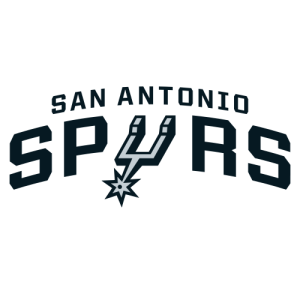A deeper dive into Victor Wembanyama's diagnosis

Yesterday at 02:00 PM
DVT sounds scary, what does it actually mean and is there cause for concern going forward?
Any injury report that ends with some variation of the words "out for the remainder of the season" is the worst for any fan to come across. It's even more devastating when it's the face of the franchise. That devastation then has the potential to compound when taking into account the player's age, the nature of the injury, and how it was suffered. For Victor Wembanyama and his blood clot, that meant a lot of gasps and anxiety throughout the Spurs fanbase.
Deep vein thrombosis, or DVT, is the official diagnosis. On its own, that's a frightening term, mainly because it's a big word and nearly no one knows what it means. Some quick googling, reveals it's a blood clot — also an unsettling term, mainly because it's a small word and most people do know what it means.
Blood clots are serious. Therefore, trepidation around the issue is warranted. Even for the average-sized person, it's genuinely frightening when talking about anything cardiovascular. This fear is then augmented when considering Wembanyama's unique stature as a giant among giants. According to numerous papers by Tomas Samaras found in the NIH's National Library of Medicine, shorter people do have an advantage in terms of life expectancy. This is due to their hearts requiring less effort to fully circulate their blood, it has a shorter distance to go. Naturally, this means that taller individuals find themselves at a disadvantage. With heart size and strength not being directly proportional to the rest of the size, they still have more blood to pump and farther to push it.
All that being said, what is modern medicine saying? What is the actual injury, and what does it mean?
On a basic level, DVT is a blood clot in a deep vein, and in Wembanyama's case, in the shoulder. A lot of times it can be found in athletes who frequently use their arms over their heads. Dr. Brian Sutterer M.D. gives a great breakdown on his YouTube channel here for a more in-depth look. As Dr. Sutterer mentions, treatment for this will be blood thinning medication and possibly an eventual surgery to relieve compression in the area.
Beyond treatment though, what does this mean going forward?
As many have noted, it is the same diagnosis current Raptors forward, Brandon Ingram, found himself with in 2019. Certified Athletic Trainer and keeper of perhaps the most extensive sports injury database, Jeff Stotts, wrote about Ingram's prognosis at the time on his site instreetclothes.com.
It is likely that Ingram will now be tested to determine if the DVT was the result of a previously undiagnosed genetic disorder. A hereditary disorder for clotting would leave Ingram vulnerable to developing another DVT or potential [Pulmonary Embolism].
Venous thromboembolism development can also be linked to an anatomical impingement often seen in individuals suffering from thoracic outlet syndrome (TOS). TOS entered the basketball lexicon earlier this season when Markelle Fultz, the top pick in the 2017 NBA draft, was diagnosed with the condition. In these cases, surgery may be warranted to remove the root of the problem.
Still nothing is guaranteed at this point. Former All-Star Chris Bosh was forced into an early retirement after battling recurring blood clots despite never being diagnosed with TOS or a hereditary disorder.
Ingram would go on to win Most Improved Player the following season.
So while the diagnosis is concerning there is some resounding good news, in that this was caught early. Blood clots have the potential to develop into pulmonary embolisms, a condition where the clot moves to block blood going to the lungs. The Spurs catching this now is crucial not only to Wembanyama's career but possibly his life.
As Dr. Sutterer remarks in his video, "This can be a challenging diagnosis. It's a very rare diagnosis. So absolute props to the Spurs medical staff for catching it before it caused any other significant complications."
Taking everything into account, it's fair for fans to be concerned but it should be encouraging there is a proven record of recovery and success in the NBA. Looking at the even bigger picture, make note of just how far sports medicine has come. Torn ACLs and Achilles Tendons are no longer career enders. Pelicans' guard C.J. McCullum suffered a collapsed lung twice and was able to fully recover and continue with his NBA career. So while this DVT is not to be taken lightly for Wembanyama, fans should have an overall positive outlook when peering onto the horizon.


